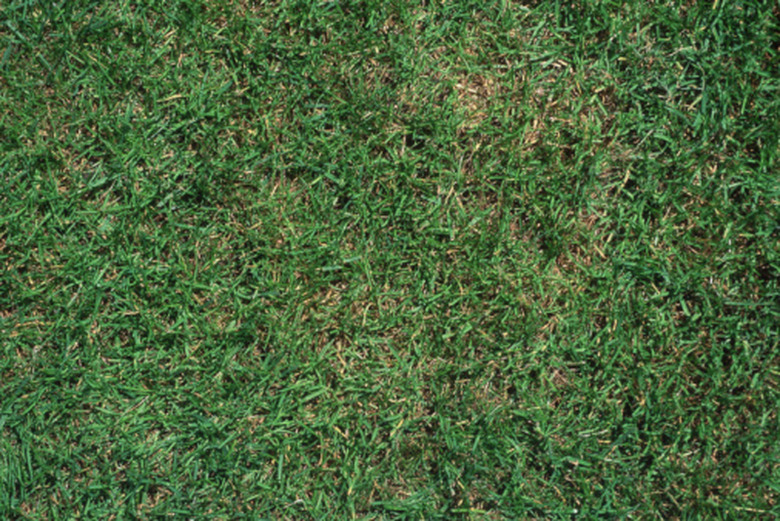How To Take Care Of Carpet Grass
Things Needed
- Tiller
- Seed
- Seed spreader
- Springs
- Shovel
- Hose
- Fertilizer
Carpet grass serves as a cover crop and temporary grass. Carpet grass works well in wet, shady areas where more common turf species prove difficult to grow. Carpet grass rarely functions as a lawn turf because it develops coarse, light-green leaf blades and seed heads that resemble crabgrass. If maintained well, carpet grass forms a dense turf that withstands foot traffic. (see References 1, page 1)
Step 1
Plant carpet grass from April to July. Carpet grass prefers slightly acidic soils with a 5.0 to 5.5 pH level.
Step 2
Broadcast 5 to 10 lbs. of carpet grass seed per 1,000 square feet. Plant sprigs 6 to 12 inches apart in rows spaced 12 inches apart.
Step 3
Apply 1/2 pound nitrogen fertilizer per 1,000 square feet in June. Make a supplemental feeding in August, if necessary. Use a slow-release formula to avoid disease growth.
Step 4
Use a rotary mower to cut the grass at the recommended height of 1 to 2 inches. Do not let the grass grow taller than 2¼ inches because it will produce seed heads.
Step 5
Provide carpet grass with 1 inch of water weekly during the growing season. Grass growing in sandy soils may require up 1/2 inch every three to four days. Water as needed to avoid wilt and browning in early fall, or before the onset of dormancy.
Step 6
Mow or manually pull weeds in carpet grass.
Tip
Brown patch fungal disease presents areas of discoloration that expand up to several feet in diameter as the disease progresses. Typically, the disease subsides with changes in environmental conditions. Water carpet grass deeply but infrequently in the morning to allow the grass enough time to dry. Avoid over-fertilizing the lawn.
Warning
Do not use post-emergent herbicides designed for use with other grasses. Carpet grass is sensitive to herbicides.
